Networking Tips: Installing Industrial Products (Including Surge Protection and Grounding)
January 2024
Setup protections against power surges and water damage
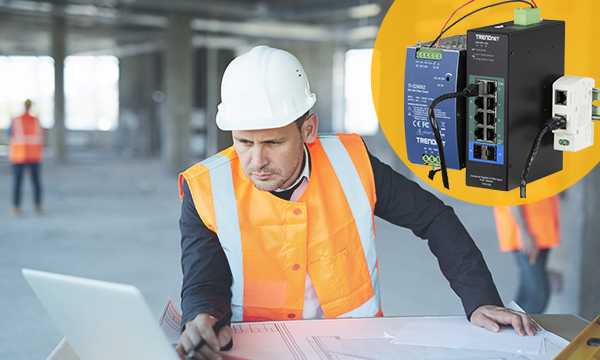
Industrial networking solutions are designed for use in harsh and rugged environments that may have extremely high and low temperatures, and heavy amounts of vibration and shock. These solutions are commonly used in factories, warehouses, refineries, rolling stock, and urban metros. For industrial products to work properly, and to prevent damages from lightning strikes and water, specific steps must be taken during installation.
In this post, we will go over:
- How to connect power to the power supply with a surge protector
- How to wire industrial products (from power supply to switch)
- How to ground industrial products
- How to add surge protection to client devices (e.g., IP cameras, access points)
- How to protect industrial products against water damage
How to connect power to the power supply with a surge protector
Wire the surge protector to Live or Hot side of AC power. This will direct any surges to the grounding point on your surge protector.
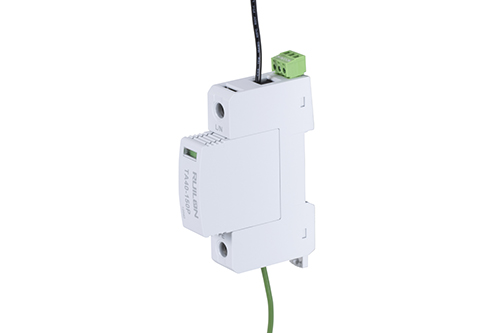
Note that every surge protector in this scenario could be different. The image above shows the surge protector from the TI-CA3K outdoor enclosure.
How to wire industrial products (from power supply to switch)
Wiring industrial products properly is important not just for functionality, but if done correctly, it also helps to prevent against electrical damages. Use red wires for positive, and black wires for negative.
Required tools and material: screw driver (Philips and/or flathead); wire strippers; red and black electrical wires
- Before getting started, make sure the power supply is off. Take the red wire, and connect the positive connection of the power supply to the positive connection on the switch.
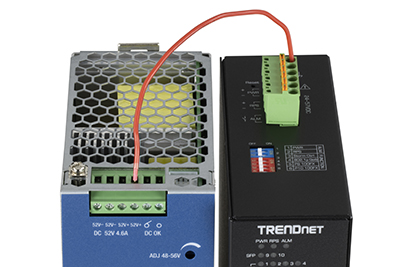
- Take the black wire, and connect the negative connection on the power supply to the negative connection on the switch.
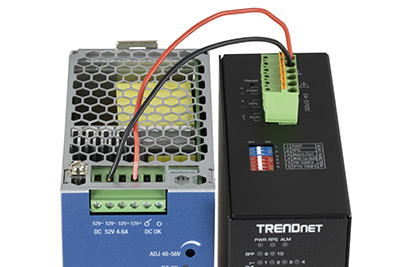
How to ground industrial products
Simply put, grounding provides a way for electricity to be discharged. Grounding protects your equipment against power surges. It provides protection from voltage, prevents electrical fires, lowers electrical noise or signal fluctuations, lessens chance of bodily injury, and reduces downtime and repair costs.
For the industrial power supply, the ground connection is part of the AC power input. The ground connection can be made from the AC power input or from a separate grounding point. Industrial switches with a ground screw can also be wired to those same grounding points.
Required tools and materials: screw driver (Philips and/or flathead); wire strippers; live and neutral wires, and wires for grounding
![Image 03: Bottom of power supply (AC input) with Live (black or other color), Neutral (white), and Ground (green or copper) wires connected. [Label wires.]](/images/news/2023/0927/03-3_wires.jpg)
Bottom of industrial power supply
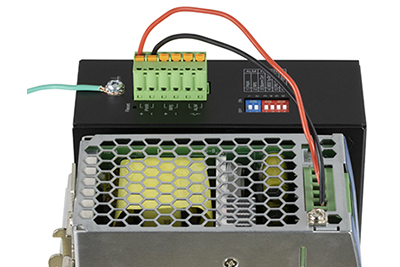
How to add surge protection to client devices (e.g., IP cameras, access points)
Some electrical or power surges can cause damage to devices and equipment that are connected to power. Common causes of power surges include electrical overload, lightning, power outages, and poor electrical wiring. Adding a surge protector to client devices helps to prevent damages from unexpected power surges.
Required tools and materials: third-party surge protector; Ethernet cables; wire for grounding
- Connect the Ethernet cables from the switch to the surge protector.
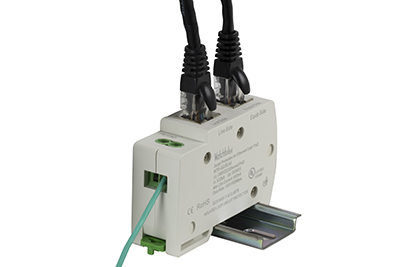
- Connect the Ethernet cables from the surge protector to client devices.
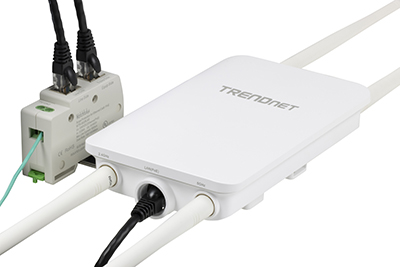
- Ground the surge protector by running a ground wire to a grounding point.
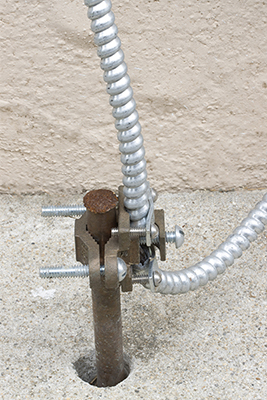
How to protect industrial products against water damage
Although industrial products are designed for rugged networking environments, that does not mean they are waterproof or moisture-proof in design. Most industrial products still need to be placed inside a water-proof enclosure to protect it against moisture and water damage.
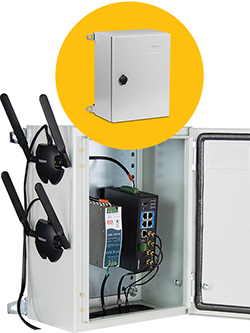 | 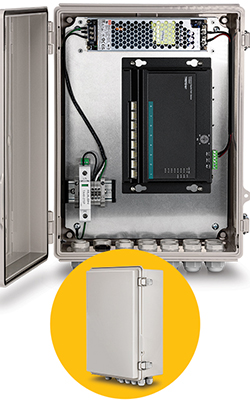 |
| TI-CA2K Outdoor enclosure with TI-W100 industrial WiFi router. | TI-CA3K outdoor enclosure with TI-PG80F industrial PoE+ switch |
Make sure to choose an enclosure with housing specifically designed for outdoor use and one that is water protected. Look for an IP rating; the second number in the rating refers to the level of protection against liquids. The higher the number, the better the protection. Which rating you should seek is dependent on your environment, but in general, a rating of 6 or above should work for most scenarios.
When making customizations to your waterproof network enclosure, make sure that the ports coming out of the box are located on the bottom of the enclosure. This helps to prevent rain water from entering the inside, which happens often when cables are run from the top of the enclosure.
Disclaimer: Consult an electrician before following any of these steps. Note that different countries may have different wiring codes and color combinations than those mentioned above.

